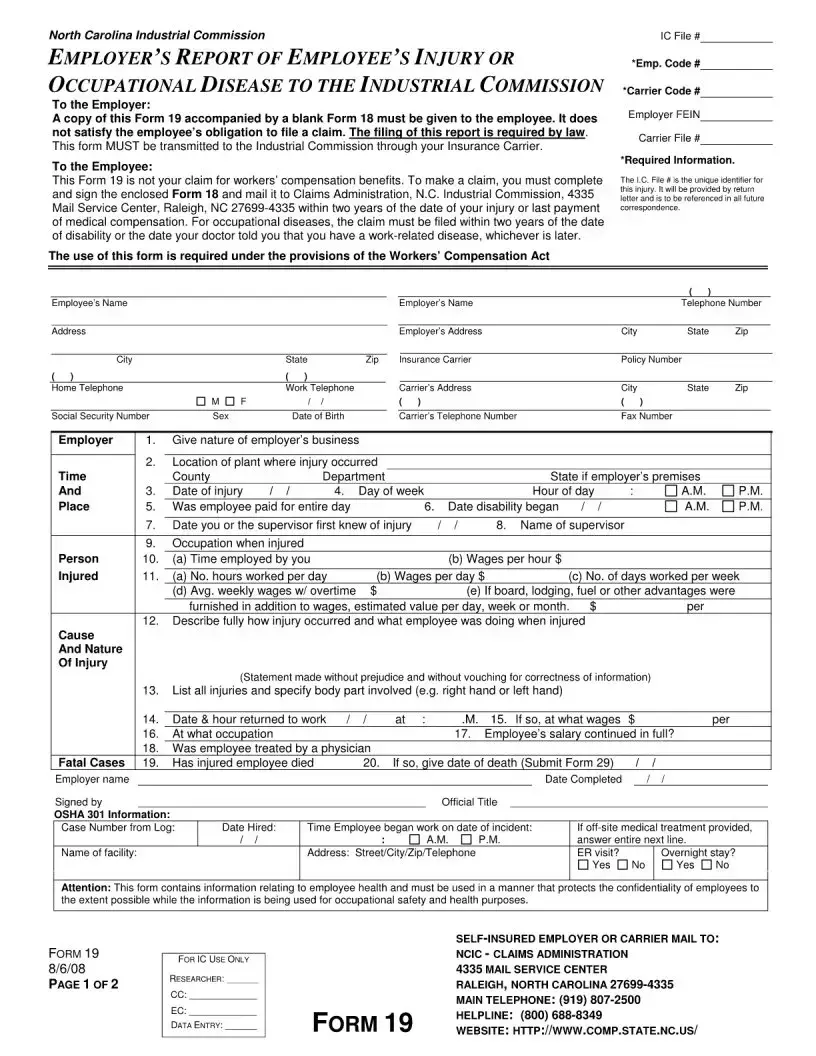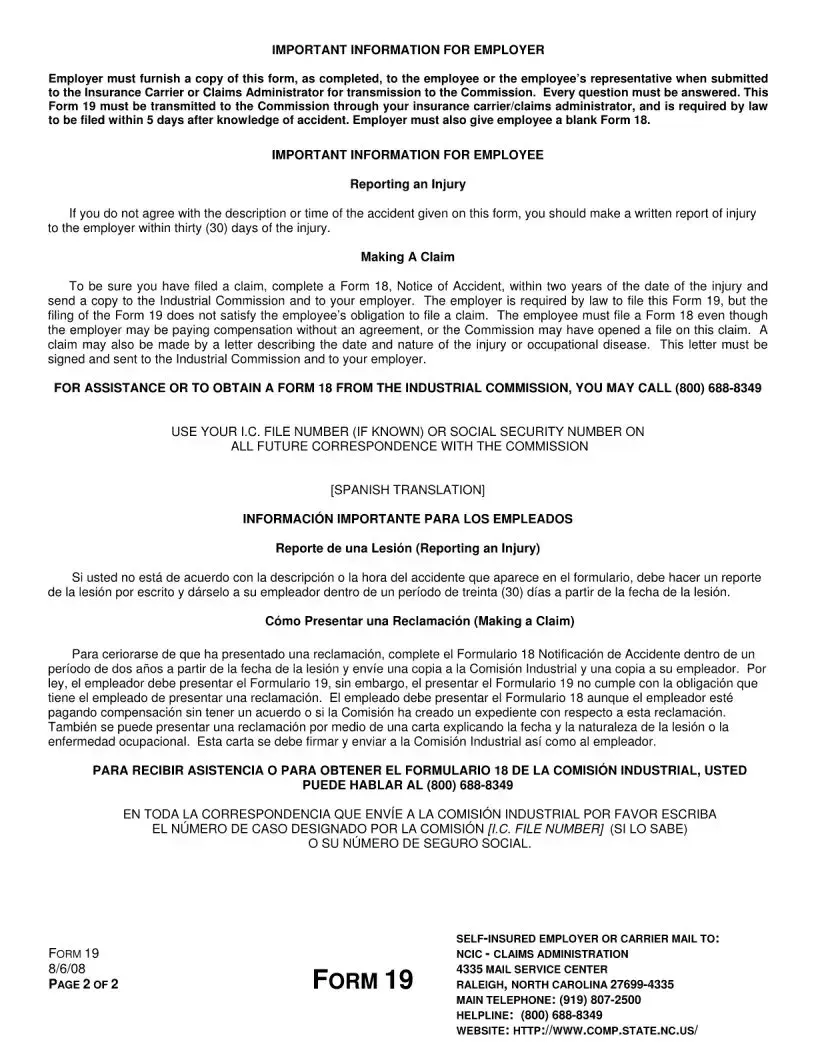The 19 North Carolina form, used for documenting personal injury in the workplace, bears similarity to the First Report of Injury (FROI) forms used in other states. Like the North Carolina version, these FROI forms are essential in starting the claims process for workers' compensation. They gather details on how, when, and where the injury occurred, along with information about the injured employee. Despite variations tailored to state-specific regulations, the underlying purpose remains consistent: to officially report workplace injuries to ensure that employees receive appropriate medical care and compensation benefits.
Another document similar to the 19 North Carolina form is the Occupational Safety and Health Administration's (OSHA) Form 300, which is a log of work-related injuries and illnesses. Both forms serve to record incidents that occur in the workplace, with the OSHA Form 300 being used to track these incidents over time to identify patterns and prevent future injuries. The main difference lies in their use; while the 19 North Carolina form initiates a claim process, the OSHA Form 300 helps in monitoring workplace safety.
Incident Report Forms, commonly used within organizations to report any types of incidents, not just injuries, share core objectives with the 19 North Carolina form. These forms capture details of the incident, involved parties, and potential witnesses, essential for investigations and insurance claims. Although broader in scope, they share the goal of documenting incidents accurately for future reference and action.
The Employee's Claim for Workers' Compensation Benefits form, found in various formats across states, closely mirrors the 19 North Carolina form. This form is typically filled out by the injured employee to claim workers' compensation benefits, detailing the nature of the injury and how it occurred. Both forms are pivotal in the claims process, providing necessary information to evaluate the eligibility for compensation benefits.
Disability Status Reports are used to monitor an injured worker's recovery progress and work capability. While the 19 North Carolina form initiates the claim, Disability Status Reports provide ongoing updates. This documentation is crucial for adjusting benefits and determining when an employee can return to work or if permanent disability compensation is needed.
The Workers' Compensation Claim Form, akin to the 19 North Carolina form, is utilized to file a claim after a workplace injury. It serves as an official request for benefits due to work-related injuries or illnesses. Both types of documents are integral in the workers' compensation system, facilitating access to medical treatment and financial support during recovery.
Accident Investigation Forms delve into analyzing the cause of the incident, containing fields similar to the 19 North Carolina form regarding incident details. These forms go a step further by probing into the root causes and contributing factors, aiming to prevent future occurrences. The focus here is on in-depth investigation and corrective measures.
Property Damage Report Forms, while not centered on personal injuries, follow a similar protocol in documenting details about incidents that result in property damage. These forms capture the date, time, and circumstances of the incident, mirroring the structured approach of the 19 North Carolina form in record-keeping for accountability and insurance purposes.
The Employee Witness Statement form, often accompanying incident reporting, collects firsthand accounts from witnesses. These statements can corroborate the details filled out in the 19 North Carolina form, providing additional perspectives on the incident. Together, they form a more comprehensive picture of the event for accurate assessment and resolution.
Finally, the Return to Work Form is used after an employee has recovered from an injury and is ready to resume work, either in a previous or modified capacity. While it represents a later stage in the process than the 19 North Carolina form, both are critical in the management of workplace injuries, from initial reporting to the eventual return of the employee to work, marking a full cycle of injury management and recovery.

